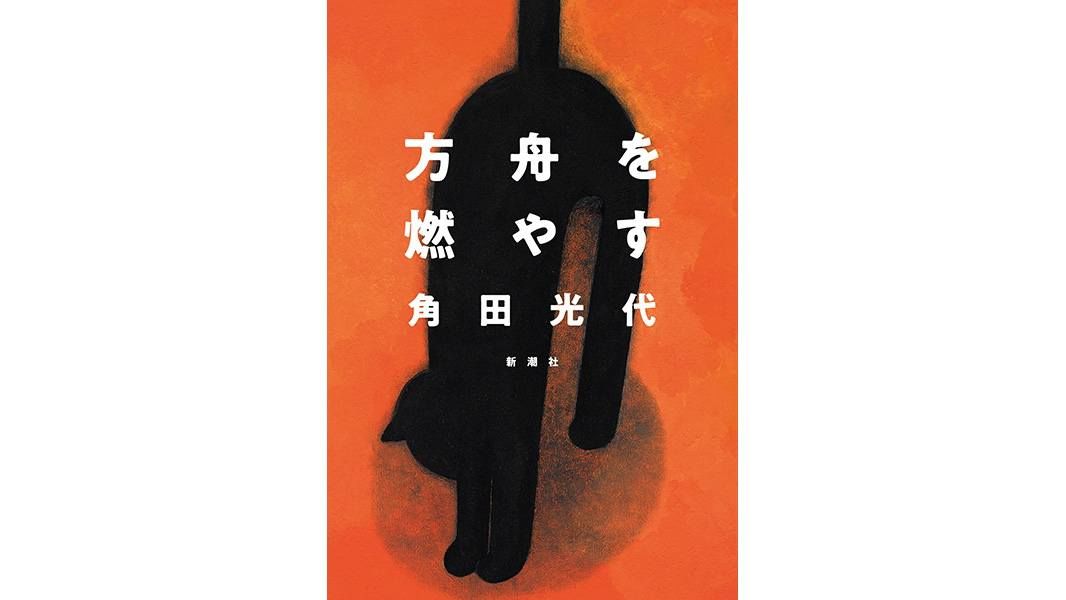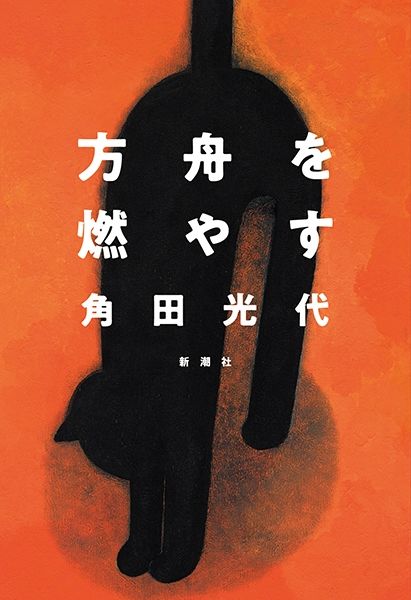
“Burning the Ark”: What’s Really True?
Society Books- English
- 日本語
- 简体字
- 繁體字
- Français
- Español
- العربية
- Русский
One of the themes of Kakuta Mitsuyo’s latest novel Hakobune o moyasu (Burning the Ark) is the nature of rumors and the difficulty of knowing who to trust and what is real.
At first, the topic is handled lightly, almost like a side dish on a restaurant menu. But the subject gains in weight and importance. By the end, I found the book’s probing examination of these questions starting to disturb my confidence in my own ability to tell truth from lies. There was something unsettling about the way in which the story and its themes insinuated themselves into the deepest parts of my mind.
At times, reading the novel felt like a blow to the solar plexus; the conclusion gave me a sense of almost horrified awe at the skill with which the author had plotted the story in such a way as to manipulate her readers and undermine their confidence in their view of the world.
Urban Legends and Folk Beliefs
There are two main characters in the story. One is a boy who is born in the mountains of Tottori Prefecture in the early 1960s. The other is a woman who graduates from a high school in Tokyo around the same time and starts a job with a confectionary company. In the first part of the novel, their lives develop separately, described alternately in episodes that bring certain moments in time back to vivid life: 1967, 1976, 1980. . . .
The older brother of the Tottori boy, for example, is obsessed for a while with ham radio. I myself can remember these black machines, and the distinctive bleeping static I once heard in my cousin’s bedroom.
The female protagonist feels pressure to get married and quit her job before she gets left behind. Her relief when she achieves this modest ambition may prompt bittersweet memories in readers old enough to remember the very different working world that existed in the days before equal opportunity employment laws.
The plot is full of incidents from recent history—mothers’ irrational fears about infant vaccination, high school students who experiment with Ouija board–like divination and convince themselves that they have been cursed, earnest discussions about the prophecies of Nostradamus, the Y2K problem, and many other urban legends and half-forgotten folk beliefs that will prompt a rush of recognition in many readers, whether they are old enough to remember the events themselves or not.
Part One is a much more relaxing read than Part Two. One reason is that we are already living in the “future” from the perspective of the events and phenomena described. We know that no “great king of terror” descended on the world (as prophesied by Nostradamus) and that the Millennium Bug did not crash the world’s computers and unleash a global disaster. We know that the twenty-first century started without major incident and that Armageddon did not occur. . .
We watch from our secure vantage point in the safety zone of the future as the two protagonists’ lives are buffeted by rumor and unreliable information.
A Story That Sucks You in
Part Two jumps more than a decade into the future, to a moment in 2016 when the tsunami of March 2011 has already devastated coastal towns in Tōhoku, but COVID-19 still lies in the future.
It is here that the lives of the two protagonists intersect for the first time. Our Tottori schoolboy is now working in the local city hall, and volunteers for a charity that runs a cafeteria serving affordable meals to children from low-income families. The woman, now 60 and living alone since the death of her husband, appears at the cafeteria one day as one of the caterers helping to do the cooking. Nothing dramatic happens as a result of this meeting—at least not at first.
As they settle into their respective roles, their lives gradually come to intersect more frequently through their shared point of contact. Both live alone for different reasons—divorce, bereavement, children who have grown up and left home. Life plods on.
Then a new form of coronavirus is detected in China. Surgical masks disappear from the shelves, the government asks people to stay home, and eventually vaccines are developed and vaccination programs start.
During the first part of the book, most readers will have read from their vantage point in the “safety zone” of the future, looking on with amusement at the rumors and urban legends of the past, safe in the knowledge that they know how these things end. But in Part Two, the story moves in one-year increments closer to the present time—2017, 2018. . . As we follow the story, we start to feel that our own reality is about to get swallowed into the whirlpool-like maw of the narrative.
People informing on bars that stay open during the state of emergency, despite restrictions on serving alcohol, conflict between people in favor of vaccinations and those against, huge masses of information flooding social media . . . These are events so close to our present moment that my sense of the novel changed completely when I reached this part of the story. I realized I no longer knew for sure which parts were true and which were false; which parts I could safely laugh off and which were more serious. Suddenly I started to see the whole novel in a completely different way.
“I know everyone thinks they can easily trick an old woman like me.” These words are often spoken by the female protagonist. She starts to suspect that the government is forcing old people to get vaccinated against their will, that there is a conspiracy to evict people from their homes by telling them they need to evacuate because of a coming typhoon. She becomes suspicious of people around her, uncertain who she can trust.
What does it mean to deceive someone? I may feel convinced that I have been thinking for myself and making my own decisions—but what if I was being deceived all the time, and just did not notice? Suddenly, the values and beliefs I thought were my own seem to teeter and shift.
I assumed when I started the novel that I was reading a story about two people who never really existed, and that I was reading purely for entertainment. But after a while I started to feel a disconcerting sense that I too was being pulled into the story: this was a story about me too. I no longer felt so confident about my ability to judge what was fact and what was fiction, to know what was true and what was lies. I started to have doubts about my own past actions—had I really done the right thing? Sometimes the feeling almost made me want to scream.
Where Is the Border Between Truth and Lies?
The term “fake news” has become a commonplace in the discourse of daily life.
New technologies like social media and artificial intelligence have made it easier for demagoguery, rumors, and deceit to spread, making the line between truth and lies more ambiguous than ever.
But although these technologies did not exist in the past, the basic situation we face has perhaps not changed all that much. Rumors (or what we take to be rumors) spread, people struggle to tell truth from lies, and some people are persuaded by false rumors and start to act irrationally. The same basic pattern of human behavior has presumably existed since ancient times.
Is there really such a big difference between Nostradamus and panicked rumors about COVID-19?
A book like this makes us realize that despite our complacent self-assurance that we can easily see through the lies that led people astray in earlier times, in fact we too struggle to know for certain what is true and what is not.
If something happened now, how would you react? This is the kind of question the novel fires at readers as the plot hurtles toward its conclusion in Part Two.
Are the things we believe truth or lies? What can we hold onto as we go through life? Like me, many readers may feel less confident of their answers to these unsettling questions by the time they come to turn the final page.
(Originally published in Japanese. Banner photo: The cover of Hakobune o moyasu. Courtesy Shinchōsha.)
